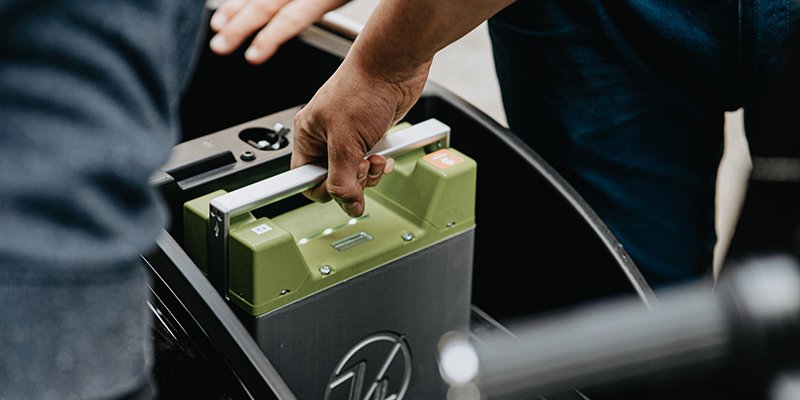
UN 38.3 testing and certification for lithium-ion batteries
UN 38.3 is an important international standard for testing lithium-ion batteries. Which lab tests does the standard include to make sure that such batteries can be transported safely?
Lithium-ion batteries are widely used in a variety of electronic devices, from smartphones and laptops to electric vehicles. However, the safe transportation of these batteries is a critical concern due to the potential for thermal runaway, which can cause a fire or explosion. This is why laboratory testing of such batteries is important to warrant the safety of people transporting them. The most important standard for performing such tests is UN 38.3, set by the United Nations . This standard outlines a series of tests that must be performed on lithium-ion batteries to ensure that they are safe for air transportation as well as transportation in other vehicles.The standard includes eight critical tests that need to be performed, labeled “T1” to “T8”.
T.1: Altitude simulation
The altitude simulation evaluates the battery's performance under simulated high-altitude conditions. The test involves exposing the battery to a controlled environment with reduced atmospheric pressure and monitoring its performance over a specified period of time. This helps to determine if its performance is affected by the reduced atmospheric pressure during air transport. The test typically involves exposing the battery to altitudes ranging from 15,000 to 25,000 feet above sea level.
T.2: Thermal test
The thermal test evaluates the battery's performance under different temperature conditions. The test involves exposing it to extreme high and low conditions, and monitoring its performance over a specified period of time. This helps to determine if the battery's performance is affected by temperature and if it can withstand the thermal stress that may occur during air transport. The test typically involves exposing the battery to temperatures ranging from -40°C to +70°C.
T.3: Vibration test
The vibration test evaluates the battery's performance under various vibration conditions. It involves exposing the battery to controlled vibrations and monitoring its performance over a specified period of time. This helps to determine if the battery's performance is affected by vibration and if it can withstand the mechanical stress that may occur during air transport. The test typically involves exposing the battery to vibrations with different frequencies and amplitudes.
T.4: Shock test
The shock test evaluates the battery's performance under various shock conditions. It involves exposing the battery to controlled shock conditions and monitoring its performance over a specified period of time. This helps to determine if the battery's performance is affected by shock. The test typically involves exposing the battery to shocks with different magnitudes and durations.
T.5: External short circuit test
The external short circuit test evaluates the battery's performance in the event of an external short circuit. This is done by exposing the battery to a controlled short circuit and monitoring its performance over a specified period of time.
T.6: Impact test
The impact test is performed to assess the battery's performance and durability when subjected to different types of physical impacts, such as crushing or dropping.
These impacts on the test object are made using a specialized test apparatus. The impacts are applied at different points on the battery, including its sides, corners, and top and bottom surfaces. During the test, the battery is monitored to ensure that it does not leak, rupture, or ignite in the process.
T.7: Overcharge test
The overcharge test is carried out to assess the battery's performance when subjected to high levels of electrical current. To perform the test, the battery is subjected to a high electrical current for a specified period of time. Meanwhile, it is monitored to ensure that it does not overheat, leak, rupture, or ignite during the testing process. The results of the test are used to determine the battery's ability to withstand high levels of electrical current, and whether it is suitable for use in different applications, such as high-power electronic devices or renewable energy systems.
T.8: Forced discharge test
The forced discharge test is aimed at assessing the battery’s performance when subjected to a forced discharge, which occurs when the battery is drained of all its energy. To perform the test, the battery is connected to a resistive load of a specific size and rating. The battery is then monitored to ensure that it does not overheat, leak, rupture, or ignite during the testing process.
Test results
After performing all eight required tests, the testing lab will issue a test report. In this document, the measurements and observations from all tests are included. This way, the reader can deduct from the report which of the tests have been passed and which ones have failed. In addition to a test report, some testing labs also issue a so-called “certificate”, in which the issuing body declares that all requirements of the UN 38.3 standards have been met by the test specimen. This is why sometimes the term “UN 38.3 certification” is used in this context.
Finding testing labs for UN 38.3 testing
As detailed above, the testing requirements of the UN 38.3 standard cover a broad spectrum of different parameters. Performing all of these tests requires a variety of different testing equipment, as well as lab staff qualified to carry out each test. Maintaining such resources is costly, which is why it may be challenging to find one laboratory that can offer all eight tests from one hand. This is why some manufacturers may opt to have different tests performed by several laboratories, each of them specialized in a specific field of testing. Either way, an easy option to find a suitable testing provider is submitting a free testing request on the testxchange platform. After submitting a short request form, buyers can receive offers from qualified laboratories for the battery testing that is needed. This way, there is no need to contact several testing providers individually.